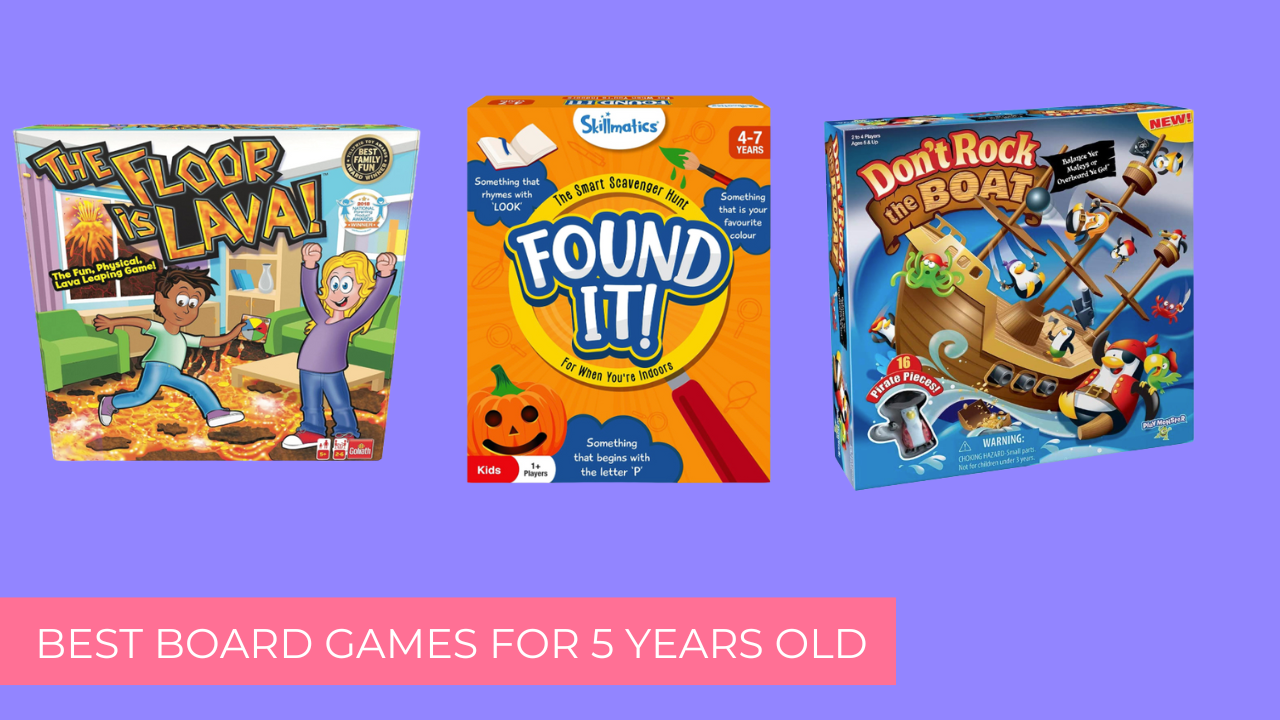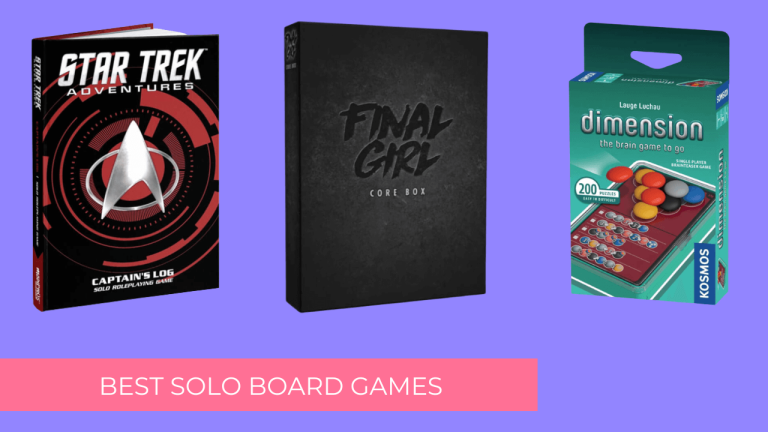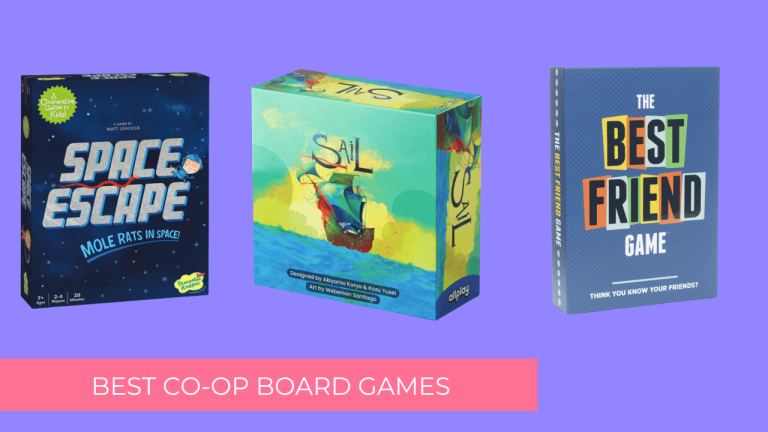Young Gamers: Best Board Games for 5 Year Olds
Board games have long been hailed as a secret weapon in a parent’s arsenal, capable of transforming playtime into an engaging and educational experience for their 5 Year Olds. As our little ones embark on their journey of discovery, these tabletop adventures offer myriad benefits.
Board games nurture essential skills such as problem-solving, teamwork, and strategic thinking, all while weaving a tapestry of fun and learning. In this article, we will dive into the enchanting realm of board games tailored specifically for 5 Year Olds, unveiling a treasure trove of options that will captivate young minds and fuel their intellectual growth and creativity.
This article aims to guide parents and caregivers in selecting the best board games for their 5 Year Olds, equipping them with an array of captivating choices that strike the perfect balance between entertainment and education.
Comparison Chart
| Image | Product | Detail | Price |
|---|---|---|---|
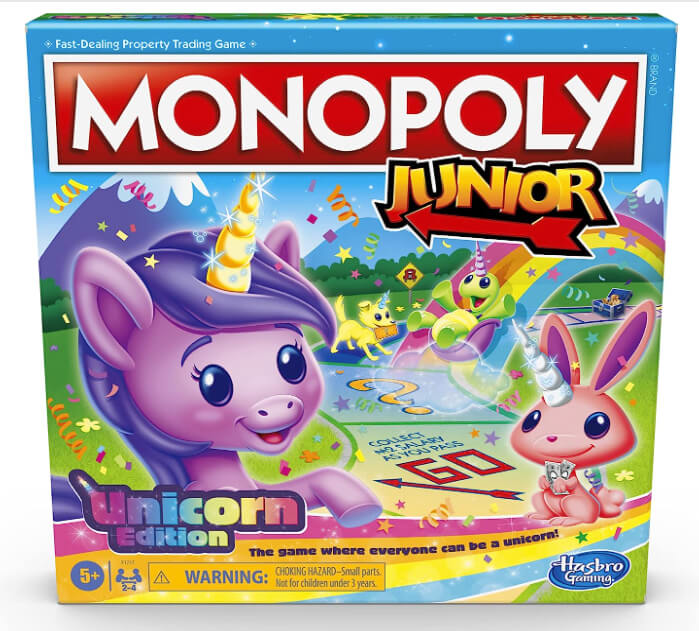 | Monopoly Junior: Unicorn Edition |
| Price |
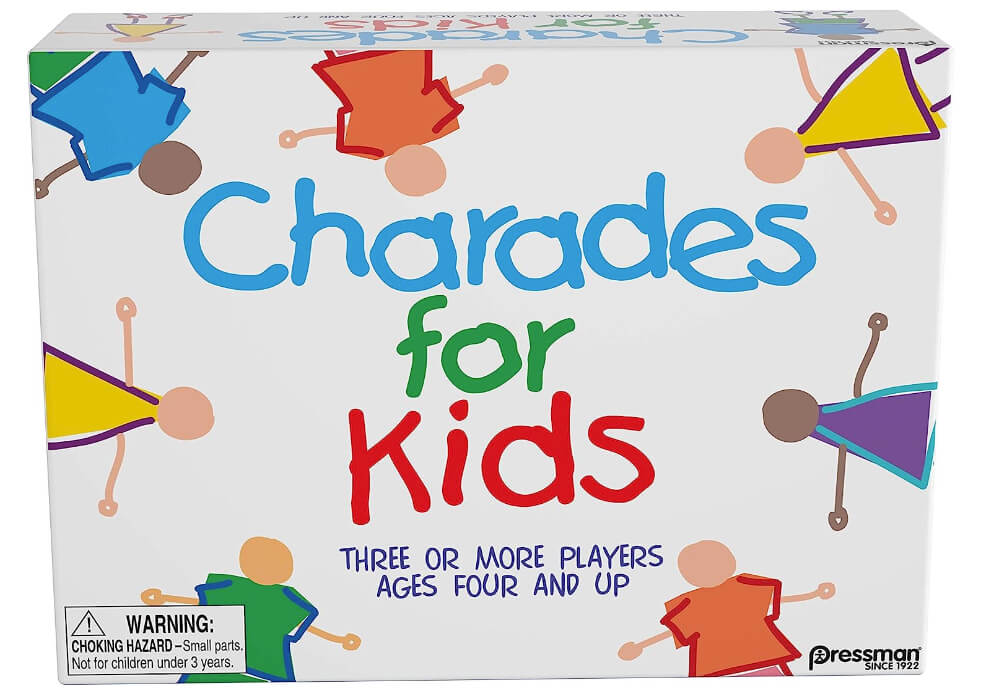 | Charades for Kids Board Game |
| Price |
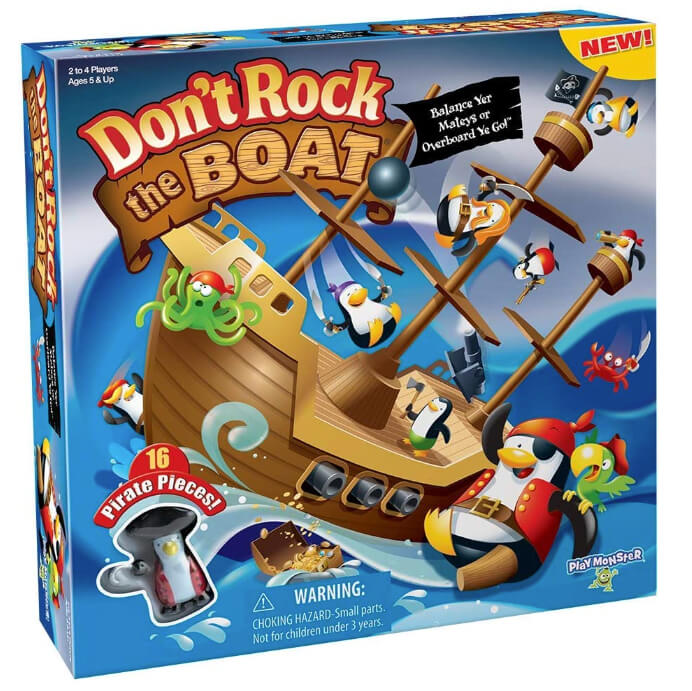 | Don’t Rock the Boat Board Game |
| Price |
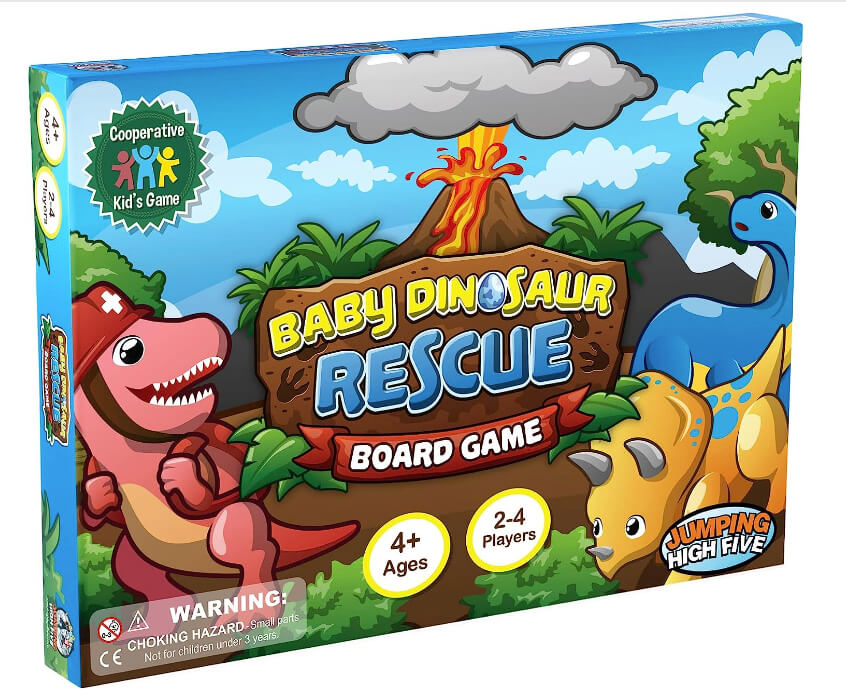 | Baby Dinosaur Rescue Board Game |
| Price |
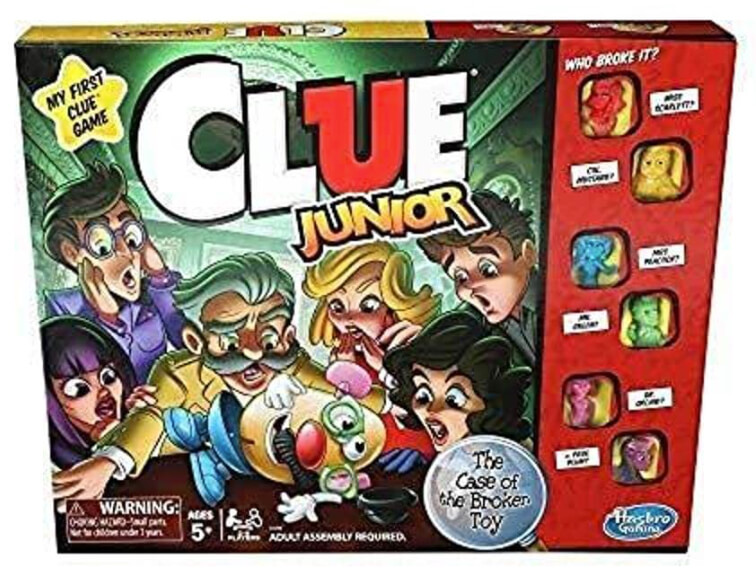 | Clue Junior Board Game |
| Price |
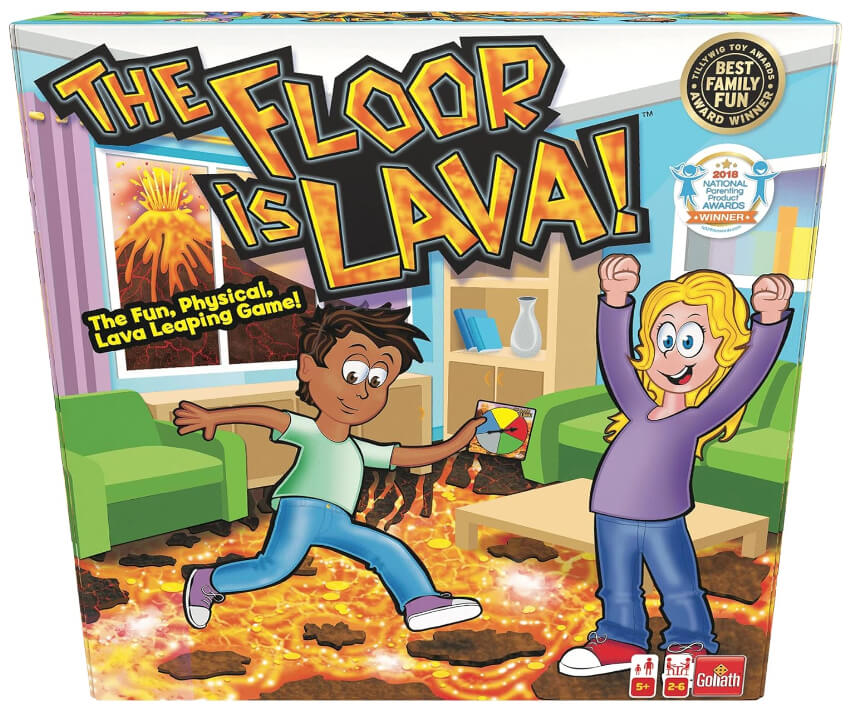 | The Floor is Lava Board Game |
| Price |
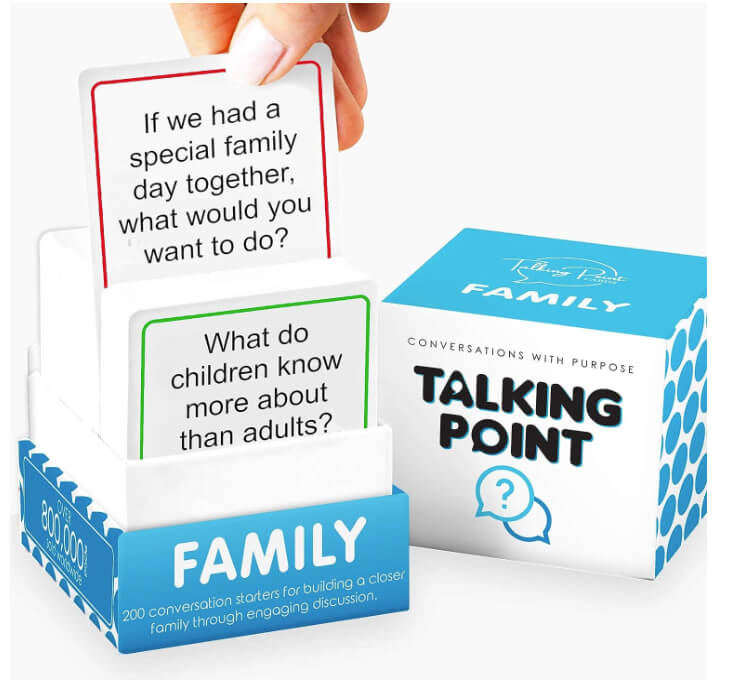 | Talking Points Board Game |
| Price |
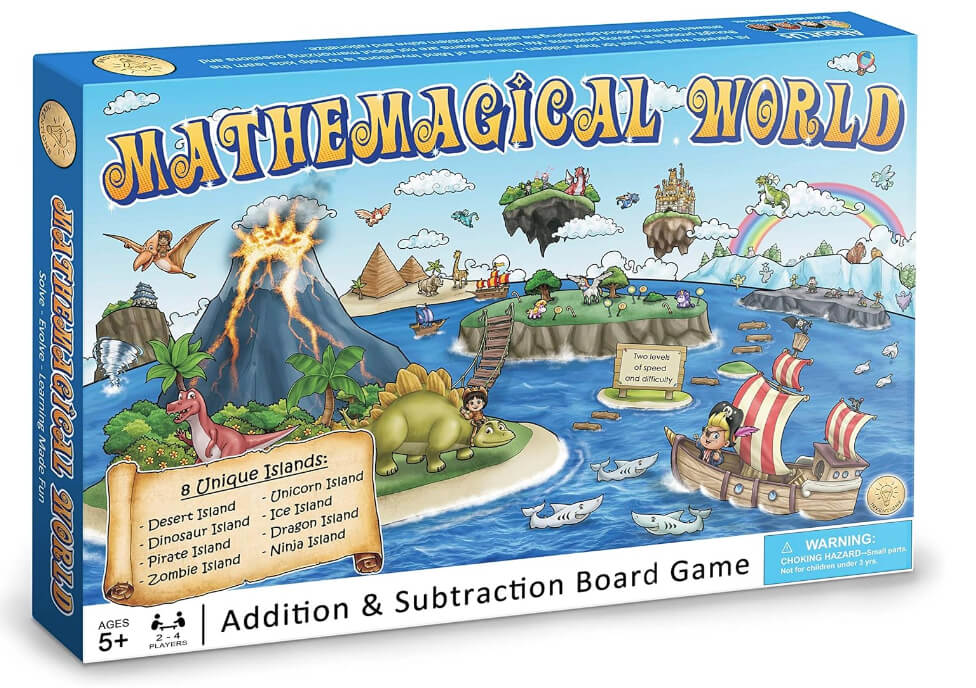 | Mathematical Word Board Game |
| Price |
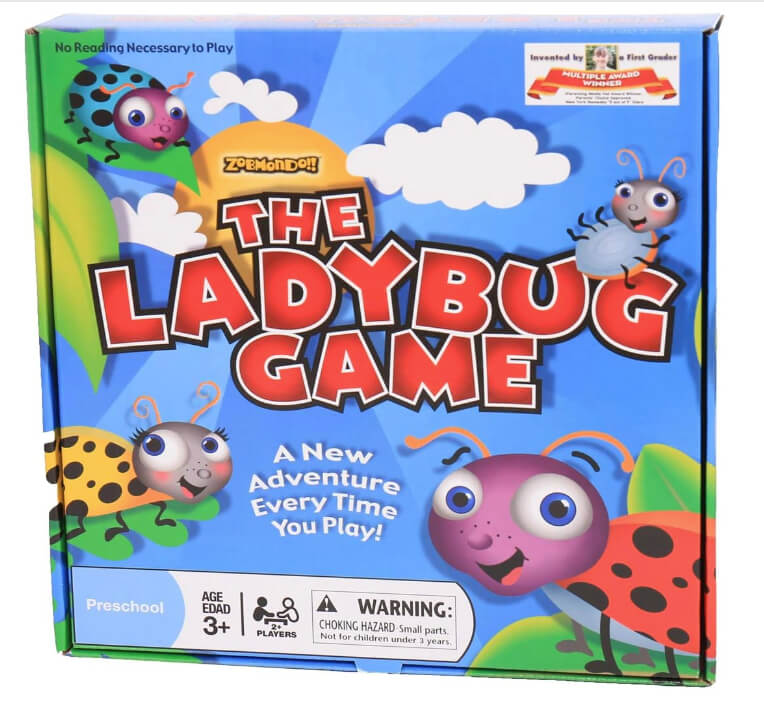 | The Ladybug Board Game |
| Price |
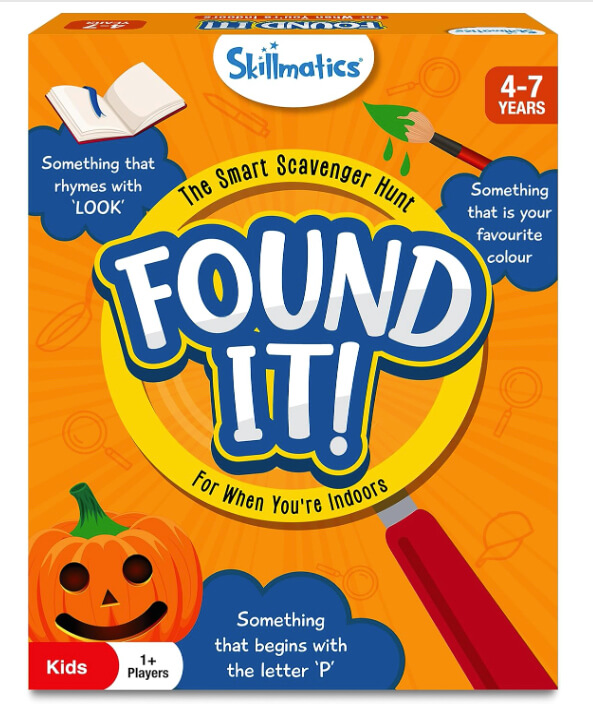 | Found It Board Game |
| Price |
10 Best Board Games for 5 Year Olds
- Comparison Chart
- 10 Best Board Games for 5 Year Olds
- 1. Monopoly Junior: Unicorn Edition Board Game
- 2. Charades for Kids Board Game
- 3. Don’t Rock the Boat Board Game
- 4. Baby Dinosaur Rescue Board Game
- 5. Clue Junior Board Game
- 6. The Floor is Lava Board Game
- 7. Talking Points Board Game
- 8. Mathematical Word Board Game
- 9. The Ladybug Board Game
- 10. Found It Board Game
- Final Words
1. Monopoly Junior: Unicorn Edition Board Game

- Immerse in a vibrant realm with rainbows, unicorns, and magical creatures.
- Fast-paced gameplay keeps young players engaged for approximately 30 minutes.
- Teaches money management and decision-making skills enjoyably.
- Choose from Unibunny, Magic Puppy, Turtlecorn, and Unicorn characters.
- It is ideal for ages five and up, accommodating up to four players.
Game Specifications
| Material | Plastic |
| No. of Players | 4 |
| Playtime | 20 minutes |
| Theme | Fantasy |
Monopoly Junior: Unicorn Edition emerges as a vibrant contender, offering young players a magical journey through a realm inhabited by their favorite mythical creatures. As we embark on this whimsical adventure, it’s only fitting to compare it to another beloved board game for youngsters: Candy Land. While both games cater to the same age group, they offer distinct experiences. Candy Land takes players on a colorful path of sweets and surprises.
Monopoly Junior: Unicorn Edition is an imaginative twist on the classic Monopoly, tailored for kids aged five and up. This enchanting board game lets youngsters enter a world filled with rainbows, butterflies, shooting stars, and all things unicorn enthusiasts adore.
Players assume the roles of adorable unicorn characters like Unibunny, Magic Puppy, Turtlecorn, and Unicorn, prancing around the vibrant gameboard, buying unicorn-themed items, and collecting money. With a quick and exciting gameplay design, it’s an ideal introduction to the Monopoly universe for the little ones, offering endless fun in approximately 30 minutes of playtime and accommodating up to four players.
Our Recommendations
Monopoly Junior: Unicorn Edition is a delightful addition to the world of board games for 5 Year Olds. With its captivating unicorn-themed elements, colorful gameboard, and engaging gameplay, it’s bound to capture the imaginations of young players.
Pros
- Colorful and engaging.
- Educational value.
- Quick gameplay.
- Appeals to unicorn fans.
Cons
- Limited player capacity.
2. Charades for Kids Board Game

- It is designed for kids but a blast for the whole family, fostering bonding moments.
- Perfect for non-readers, simultaneously reinforcing early reading skills subtly.
- Inclusivity for younger and older players, keeping the game engaging.
- Encourages physical movement and creative thinking as players act out clues.
- Ideal for group play, cultivating social interaction and cooperative play.
Game Specifications
| Material | Cardstock |
| No. of Players | 3 |
| Playtime | 30 minutes |
| Theme | Family |
Charades for Kids takes the spotlight as a classic and uproarious contender, suitable for the entire family. But how does it stack up against its counterpart, Guess Who? Both games offer engaging moments of fun and learning, yet they take distinct approaches to entertainment. While Guess Who challenges players to deduce their opponent’s character, Charades for Kids unleashes the power of imagination and physicality as players act out clues.
Charades for Kids is a timeless game designed with young players in mind but crafted for family enjoyment. It introduces children to the world of charades, offering a stimulating experience that combines physical movement with imagination.
With picture clues on cards, it’s accessible even to non-readers, promoting early reading skills subtly. This game encourages kids aged four and up to express themselves and think creatively as they act out clues, fostering laughter and active participation among three or more players. It features three levels of play, ensuring younger participants can join in while challenging older players.
Our Recommendations
Charades for Kids is a fantastic addition to board games, especially for family gatherings or playdates. Its simplicity, versatility, and ability to cater to various age groups make it an excellent choice for fostering creativity, communication, and laughter.
Pros
- Family-friendly.
- Educational.
- Inclusive gameplay.
- Active engagement.
Cons
- Not suitable for solo play.
3. Don’t Rock the Boat Board Game

- Balance pirate-themed pieces on a wobbly ship without capsizing for family fun.
- Perfect for small groups, fostering social interaction and friendly competition.
- Sixteen charming playing pieces, including pirate penguins and a treasure chest.
- Enjoyable 15-minute sessions for repeated, engaging gameplay.
- Encourages fine motor skills and strategy while providing heaps of amusement.
Game Specifications
| Material | Plastic |
| No. of Players | 2-4 |
| Playtime | 15 minutes |
| Theme | Movies |
How does the classic Hungry Hungry Hippos stack against Don’t Rock the Boat, which sets sail as a rousing challenger? Both games are fun and exciting, yet they provide quite different experiences. The players of Hungry Hungry Hippos race to eat as many marbles as possible, while the players of Don’t Rock the Boat try to keep their balance on a sinking ship.
For ages five and older, Don’t Rock the Boat is a high-seas adventure for two to four players. The game’s quirky elements and endearing pirate motif make it a hit with the younger set. The aim is to keep a swaying pirate ship upright while balancing several objects.
The game is tactile and aesthetically interesting, with 16 different playing components, such as pirate penguins, a cannon, a treasure chest, and more. The simple setup and short 15-minute playing duration make it a game that kids will want to play repeatedly.
Our Recommendations
Don’t Rock the Boat is a fun show for the whole family since it features both serious and silly moments. It’s a great option for family game night because of its pirate theme and fun gameplay, which promote fine motor skills and strategic thinking.
Pros
- Family-friendly.
- Quick setup.
- Engaging theme.
- Develops motor skills
Cons
- A little too wobbly
4. Baby Dinosaur Rescue Board Game

- Work as a team to save dinosaurs from a volcanic eruption.
- Perfect for young children, fostering skills like teamwork and problem-solving.
- No reading is required, making it accessible to non-readers and quick to start.
- Encourages social skills, strategic thinking, and turn-taking while eliminating competitive stress.
- Vibrant game boards, dinosaur tokens, and thematic cards create an engaging prehistoric world.
Game Specifications
| Material | Cardboard |
| No. of Players | 1-4 |
| Playtime | 20 minutes |
| Theme | History |
Baby Dinosaur Rescue emerges as an engaging and educational contender. But how does it compare to another cooperative game, Race to the Treasure!? Both games encourage teamwork and collaboration among young players, fostering problem-solving and strategic thinking skills. While Race to the Treasure! Involves navigating a maze to find hidden treasure, Baby Dinosaur Rescue embarks on a prehistoric adventure to save dinosaurs from a volcanic eruption.
Baby Dinosaur Rescue invites 2 to 4 players aged four and up to embark on a thrilling cooperative journey. The goal is to help all the dinosaurs escape to safety on an island before the valley fills with lava. This game stands out with its image-based play, making it accessible to young children and eliminating the need for reading.
It’s not just a game; it’s a tool for skill development, fostering teamwork, communication, and strategic thinking. Players work together to gather all the dinosaurs, fostering good sportsmanship, problem-solving, and turn-taking skills. With an emphasis on collaboration over competition, it empowers young learners and shows them that playing and winning together is truly fun.
Our Recommendations
Baby Dinosaur Rescue combines entertainment and education seamlessly, making it an excellent choice for family game nights or classroom activities. Its cooperative nature encourages children to share ideas and strategies and develop essential social and cognitive skills.
Pros
- Promotes teamwork.
- Accessible to young kids.
- Skill development.
- No competitive stress.
Cons
- Smaller kids might get confused.
5. Clue Junior Board Game

- A kid-friendly introduction to the classic Clue game with a broken toy mystery.
- Designed for kids aged five and up, fostering deductive reasoning and problem-solving.
- Players deduce the culprit, the broken toy, and the time it was broken.
- Ideal for playdates and rainy days, accommodating 2 to 6 players.
- Encourages critical thinking and teamwork, fostering cognitive growth in children.
Game Specifications
| Material | Plastic |
| No. of Players | 2-6 |
| Playtime | 15-30 minutes |
| Theme | Game |
Now that the mystery-themed Clue Junior has come into the limelight, it’s time to see how it stacks up against another famous game: Guess Who. The game has exciting gameplay, but it also has its unique difficulties. In Guess Who? You try to determine your opponent’s personality by asking them yes/no questions. In contrast, in Clue Junior, young players experience the excitement of solving puzzles involving a broken toy.
Clue Junior is an entertaining introduction to the classic mystery board game for youngsters over five. Players utilize tactics and elimination to solve the mystery of who damaged a toy when it happened and what kind of item it was.
It’s perfect for 2–6 players and has simple rules, making it a go-to for family game evenings and playdates. The game is a great way to introduce youngsters to the fun of deductive reasoning and problem-solving while providing them with hours of amusement.
Our Recommendations
The original Clue game has been successfully adapted for a younger Clue Junior audience, offering a thrilling and age-appropriate experience. It’s a great option for helping kids grow their brains since it promotes independent thought and collaboration.
Pros
- Kid-friendly.
- Cognitive development.
- Engaging gameplay.
- Suitable for groups.
Cons
- Requires at least two players.
6. The Floor is Lava Board Game

- Transforms any floor into an exciting “lava-jumping” challenge, promoting physical activity and creativity.
- It is designed for two or more players aged 5 to 105, making it perfect for family gatherings.
- Encourages an active imagination and laughter-filled moments with cushioned foam stepping stones.
- Suitable for indoor and outdoor play, ideal for birthdays, holiday parties, or game nights.
- Includes 25 colorful foam “safety stones,” 27 challenge cards, a game spinner, and instructions.
Game Specifications
| Material | Paper |
| No. of Players | 2-6 |
| Playtime | 20 minutes |
| Theme | Party Games |
The Floor is Lava is a refreshing departure from the norm for board games. How does it stack up against Twister, another physical game? There are differences in how each game promotes physical activity and how much fun players have. The Floor is Lava turns any surface into a thrilling lava-jumping experience, while Twister forces participants to distort their bodies on a mat.
The Floor is Lava isn’t your average board game; it’s an enthusiastic call to get up and move about. Jumping from one set of cushioned foam stepping stones to another, avoiding the “lava” below, this game may be played in the comfort of your own home or the privacy of your lawn.
It’s great for parties, get-togethers, and game evenings since it can accommodate two or more players of any age (from five to one hundred and five). All ages may have hours of fun with the game’s 25 colored foam “safety stones,” 27 challenge cards, a game spinner, and straightforward directions.
Our Recommendations
Unlike conventional board games, The Floor is Lava is a thrilling innovation. It’s great for people of all ages because it gets them moving, thinking creatively, and laughing.
Pros
- Promotes physical activity.
- All-age entertainment.
- Encourages creativity.
- Versatile indoor/outdoor play.
Cons
- Lacks a bit of quality
7. Talking Points Board Game

- Two hundred engaging questions and topics for family bonding and understanding.
- Divided into ‘Get to Know You,’ ‘Family Time,’ ‘What Makes You, You,’ and ‘Fun & Random.’
- Suitable for all family members, encouraging interaction and trust-building.
- Professional-grade finish protects cards from stains and wear.
- Slim deck box for easy storage and ideal for on-the-go conversations.
Game Specifications
| Material | Cardstock |
| No. of Players | 4-5 |
| Playtime | 30 minutes |
| Theme | Love, Humor |
When it comes to board games that foster meaningful discussions, Talking Points stands as a delightful contender. But how does it compare to the classic Family Feud? While Family Feud involves guessing popular answers to survey questions, Talking Points takes a different approach. It offers a chance to engage in purposeful conversations and build bonds through 200 thought-provoking questions and topics.
Talking Points is more than just a game; it catalyzes meaningful conversations. This family-friendly deck contains 200 questions and topics categorized into ‘Get to Know You,’ ‘Family Time,’ ‘What Makes You, You,’ and ‘Fun & Random.’
Whether you’re looking to connect with your quiet teenager or engage your little ones, these conversation starters encourage trust, understanding, and the creation of beautiful memories. It’s a fantastic way to break away from mundane “how was your day?” questions and create a deeper connection with family members of all ages.
Our Recommendations
Talking Points is a must-have addition to family game nights, dinners, or gatherings. It’s an opportunity to foster trust, confidence, and open communication among family members. With a professional-grade finish and portable deck box, it’s designed to last through countless conversations.
Pros
- Promotes meaningful conversations.
- Inclusive for all ages.
- Durable card design.
- Portable for travel.
Cons
- No gameplay, solely conversation-focused.
8. Mathematical Word Board Game

- Eight enchanting settings make learning addition, subtraction, doubling, and halving an adventure.
- Suitable for beginners and those seeking a math challenge.
- Combines math with word recognition, fostering comprehensive learning.
- Perfect for family or group play, accommodating up to four players.
- Engaging math sessions in just 20 minutes, ideal for short learning bursts.
Game Specifications
| Material | Paper |
| No. of Players | 4 |
| Playtime | 20 minutes |
| Theme | Dragon |
Mathematical Word is a fascinating alternative. But how does it compare to other math-themed games, such as Math Bingo? While Math Bingo requires numerical memorization and matching, Mathematical Word adds a new dimension to the learning process by including words and creative worlds.
Mathematical Word is a fresh approach to early math education, encouraging players to explore eight fascinating worlds, such as Pirate Island and Dragon Island while learning addition, subtraction, doubling, and halving principles. It caters to both novices and those seeking a challenge, with two degrees of difficulty and pace.
The game promotes arithmetic abilities and word recognition, making it an all-around teaching tool. It lasts 20 minutes and can handle four players, making it great for fast and entertaining math lessons.
Our Recommendations
Mathematical Word is a novel and engaging way to teach arithmetic to young children. Its use of language and imaginary worlds provides a new dimension to mathematical instruction.
Pros
- Imaginative learning.
- Varied difficulty levels
- Word-math integration.
- Suitable for groups.
Cons
- Can get boring
9. The Ladybug Board Game

- Guide ladybugs to the Rose Garden, avoiding Praying Mantises and feeding Lazy Ants.
- Supports reading and counting through color-coded playing cards with numbers and symbols.
- Created by a first-grader, it inspires young minds and fosters creativity.
- Recognized by the Parents’ Choice Foundation as a vibrant beginner’s board game.
- For 2-4 players, ages three and up, with a quick 20-minute game time.
Game Specifications
| Material | Plastic |
| No. of Players | 2-4 |
| Playtime | 20 minutes |
| Theme | Bugs |
The Ladybug Game steps into the limelight. But how does it compare to another popular game like The Sneaky, Snacky Squirrel Game? While both games have an adorable animal theme, The Ladybug Game focuses on helping ladybugs find their way home while avoiding a Praying Mantis and collecting aphids to feed Lazy Ants.
The Ladybug Game is a delightful adventure that encourages children to help ladybugs find their way home to the Rose Garden. With adorable graphics and an enchanting story, it captures the imagination of young players.
The game entertains and supports reading and counting skills through thoughtfully designed playing cards with colors, numbers, and symbols. Invented by a first-grader, this game is an inspiring choice for young minds and an excellent birthday or holiday gift. With 2 to 4 players and a quick 20-minute game time, it’s perfect for family game nights and educational playtime.
Our Recommendations
The Ladybug Game is a blooming success combining fun and young children’s education. Its charming adventure nurtures early reading and counting skills while keeping players engaged with its colorful design and enchanting story.
Pros
- Educational and engaging.
- Created by a child.
- Award-winning.
- Suitable for family play.
Cons
- Requires a lot of reading for kids
10. Found It Board Game

- Engaging game prompts kids to find objects based on descriptive cues.
- Winner of the 2023 National Parenting Product Awards (NAPPA).
- Boosts observation and logical reasoning skills while keeping kids entertained.
- Suitable for home, school, or playdates, accommodating one or more players.
- Fosters various skills, including phonological awareness, counting, and emotional recognition.
Game Specifications
| Material | Paper |
| No. of Players | 1+ |
| Playtime | 15 minutes |
| Theme | Scavenger Hunt |
The game Spot It! is a popular companion to Found It. Unlike the classic card game Spot It!, which challenges players to locate pairs of matching pictures, the inventive Found It sends kids to search for things using only verbal clues.
The excitement of a treasure hunt can now be experienced inside with Found It!, which challenges children to locate things based on clues such as “Something with a pattern” or “Something smaller than your palm.” Players are encouraged to become involved, and the game quickly becomes exciting and fun when they are prompted to exclaim “FOUND IT!” when they find anything.
The winner is the first player to amass seven cards. This fun board game is a 2023 National Parenting Product Awards (NAPPA) honoree, and it’s perfect for family game night, classroom use, and play dates.
Our Recommendations
More than simply a game, Found It! is an exciting journey that develops kids’ powers of observation and logic. It’s great for youngsters ages 4 to 7 since there are two game modes.
Pros
- Engaging in indoor activity.
- Educational and entertaining.
- Versatile for various settings.
- Promotes diverse skill development.
Cons
- None apparent for the board game itself.
Final Words
There’s a treasure trove of options that offer fun and valuable learning experiences. Whether it’s the imaginative adventures of Monopoly Junior: Unicorn Edition, the clever clue-solving in Clue Junior, or the collaborative journey in Baby Dinosaur Rescue, these games are more than just entertainment—they’re tools for developing key skills.
As parents and caregivers, we have the privilege of choosing games that captivate young minds and foster growth in areas like problem-solving, reading, counting, and social interaction.
